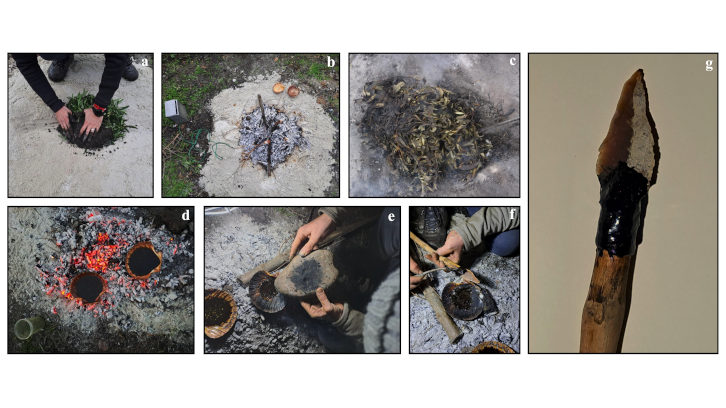The archaeological discovery that reveals how Neanderthals made tar in Gibraltar 60.000 years ago

In the excavations in the Vanguard Cave, Gibraltar, it has been found for the first time the structure used by Neanderthals 60.000 years ago to extract tar for manufacturing hunting or protective weapons. The discovery shows the extraction method they developed and demonstrates the high and complex level of organization and cognition of the Neanderthals.
A scientific study published in Quaternary Science Reviews has described for the first time a hearth structure used by Neanderthals in Gibraltar 60.000 years ago to extract plant resins. Neanderthals used tar obtained from woody plants as an adhesive for the hafting of stone points onto wooden shafts. Until now, it was not known how they obtained the tar, and two methods had been proposed. One method was simple and of low productivity, involving burning bark in the open air. A second, more complex method would have entailed heating fragments of woody plants by burying the wood fragments and heating them with fire to extract the resin.
The results of this study support the hypothesis involving the anoxic heating method. These results are highly significant because they reveal complex levels of organization and cognition in Neanderthals, indicating that they understood the plants they needed to select, and the complex industrial process required to produce tar. The hearth structure discovered during excavations at Vanguard Cave (Gibraltar, inscribed on the UNESCO World Heritage List) resembles a hollow in the sediment, and its simplicity may explain why such structures have gone undetected in the past.
The research was led by the National Museum of Gibraltar, in collaboration with the University of Murcia and the Instituto Andaluz de Ciencias de la Tierra (CSIC). In the study, a total of 31 scientists from five countries, including four UAB researchers from the Institute of Environmental Science and Technology (ICTA) and the Department of Prehistory, took part in the research, using a range of disciplines including paleobotany, archaeology, ichnology, geochemistry, mineralogy, and ecology.
The results indicate that the tar was not extracted from birch, which was rare in the area at the time, but from rockrose (Cistus ladanifer), which was abundant at the time and was widely used over time. The rapid "sealing" of the structure - caused by the rapid advance of a sand dune, which sealed the material evidence - provided excellent preservation conditions of the archaeological remains, including pollen grains and spores, allowing confirmation of the ecological conditions at the time.
The Neanderthal hunting area was on the now submerged coastal shelf off Gibraltar and stretched up to 4,5 kilometers from the caves. It has been described as a “Mediterranean Serengeti”, with a system of sand dunes with scattered pine woods, Mediterranean vegetation, and seasonal lakes. It attracted a diverse fauna, including red deer, ibex, wild horse, aurochs (ancestral cattle), and wild boar. The Neanderthals would have hafted their carefully crafted points (typically made from flints and quartzites) onto wooden shafts, using the tar to turn them into deadly weapons for use in ambush-hunting prey. They may also have used them as protection from the dangerous predators that roamed this ancient landscape - lions, leopards, spotted hyenas, wolves, and brown bears.
Rosa Maria Albert
Department of Prehistory
Joan Villanueva; Oriol Teruel; Nina Davtian
Institut de Ciència i Tecnologia Ambientals (ICTA-UAB)
Universitat Autònoma de Barcelona
References
Juan Ochando et al., A Neanderthal's specialised burning structure compatible with tar obtention, Quaternary Science Reviews (2024). DOI: 10.1016/j.quascirev.2024.109025

